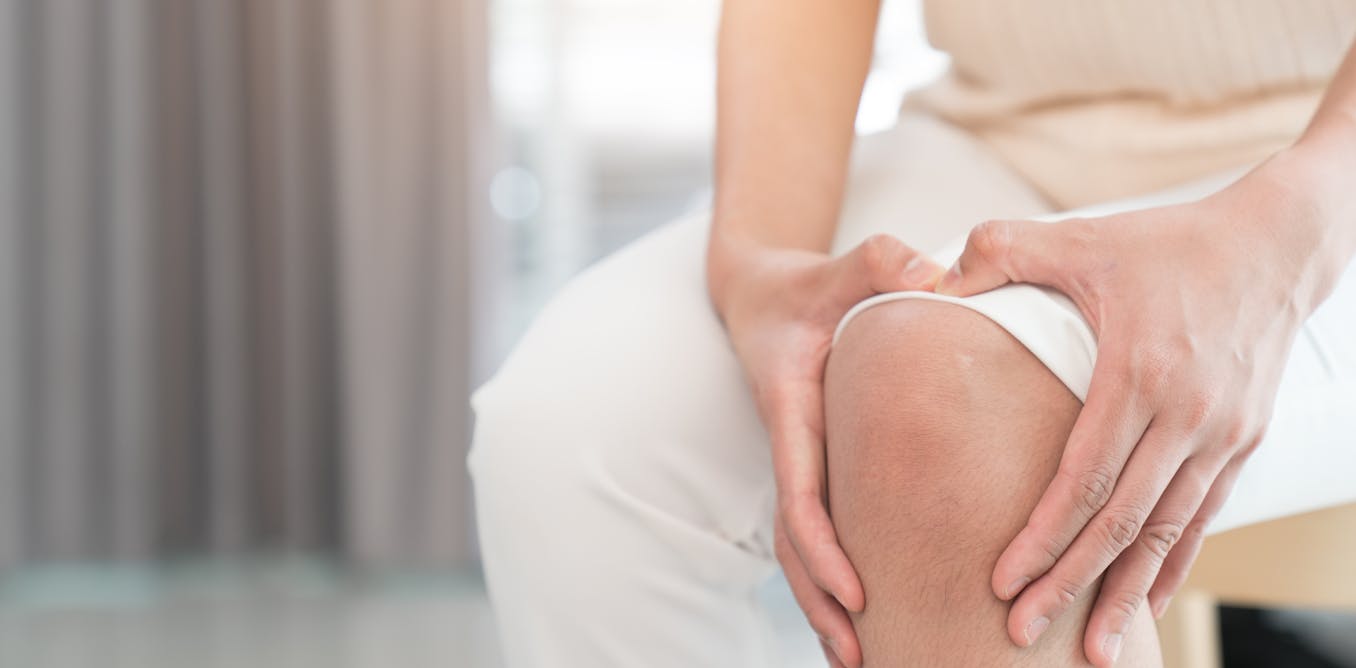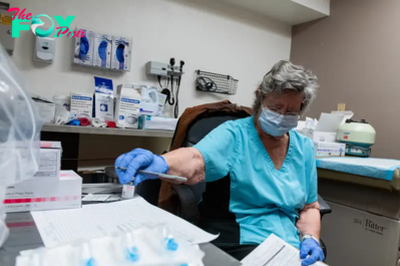Health
8 Things You Should Do for Your Bones Every Day, According to Orthopedic Doctors
Orthopedic doctors have a bone to pick with all the people who forget they’re carrying a very important skeleton around every day. We might not be able to see our ribs or tailbone or humerus, but it’s still important to make bone health a priority—because it’s tied to every other aspect of well-being.
"Your bone health and joint health is really tied to your overall wellness and health," says Dr. David Shau, an orthopedic surgeon and assistant professor at the Burnett School of Medicine at Texas Christian University. Consider, for example, that about 54 million Americans have osteoporosis, low bone mass, or both, and 2 million osteoporotic fractures occur annually. That number will exceed 3 million per year by 2040, researchers predict. “When that happens, you have a period of time where you have to heal and recover,” Shau says. “You can’t be active with your family. You can’t travel. You can’t exercise, so your cardiovascular health goes down, and you start seeing metabolic issues and other health issues.” It’s a potentially devastating chain of events, he says, that can spell trouble far into the future.
It’s never too early to start thinking about preserving your bones. Your bone density is highest when you’re in your mid-20s, Shau says, after which it typically starts to decline. That can lead to osteopenia, or decreasing bone density that isn’t yet low enough to be considered full-blown osteoporosis but is still associated with an increased risk of fractures. Once someone develops osteoporosis, they’re prone to experiencing fractures from even minor incidents—but since it’s a silent disease, many people don’t realize they have it until their bones start breaking.
With that in mind, we asked four orthopedic doctors what we can all do every day to protect and preserve our bone health.
Keep moving
People tend to think of bones as a static part of the body—but they're actually dynamic, with old bone constantly breaking down and being absorbed into the bloodstream, and new bone forming. That process, called remodeling, is affected by lots of factors, including mechanical stress from weight-bearing exercise. For example: walking, climbing the stairs, playing Sports like pickleball, doing push-ups, and jumping rope. “You’ll increase your bone density in the areas where the bone is seeing force,” says Dr. Jack Steele, an orthopedic surgeon at the University of Maryland St. Joseph Medical Center. “In areas where you’re not putting stress on the bone, your body will start to resorb that bone, and you'll lose bone density—and that can lead to osteopenia or osteoporosis.” While these conditions aren’t reversible, they are treatable with a range of medications, and progression can be slowed, minimizing damage.
Read More: Why Older People Love Pickleball So Much
Patients often ask Steele how much they need to exercise; some like walking for 30 minutes a day, while others squeeze in two hours of Tennis on the weekend. Either approach works. The most important thing, he tells them, is to be consistent and move around as regularly as possible, rather than allowing days to pass by without any activity.
If you’re in menopause, prioritize strength-training
A growing body of research suggests that menopause takes a toll on bone health. It can lead to a decline in bone density—increasing the risk of osteoporosis—as well as muscle loss from decreasing estrogen. One way to counteract that damage: lift weights. “It’s very important for women to add strength training into their routine, because there's so much muscle and bone loss as you get into those perimenopausal and menopausal years,” says Dr. Pamela Mehta, an orthopedic surgeon and founder of Resilience Orthopedics in San Jose, Calif. If you’re new to weight lifting, consider doing some squats while holding free weights, or experiment with beginner-friendly moves like bicep curls and chest presses.
Focus on two essential nutrients
Lots of minerals and nutrients play a role in strengthening bones—but two deserve special attention. Calcium, which you can only get from food or supplements, is particularly important; if you don’t get enough, your body will start to pull it from your bones, making them weaker. Vitamin D, meanwhile, helps the body absorb calcium and plays a key role in preventing osteoporosis. “You really need to have a good quantity of both,” Shau says. Depending on age, most adults need 1,000 to 1,200 mg of calcium per day, and 15 to 20 mcg of vitamin D.
Read More: Green Tea Is Even Better For You Than You Think
To boost your calcium intake, focus on dairy products like milk, cheese, and yogurt; almonds; dark leafy greens like kale; and soy products including tofu, he advises. Foods high in vitamin D, meanwhile, include egg yolks, tuna, sardines, salmon, and cheese.
Try to get sunlight every day
Basking in the sun is a great move for bone health. “When sunlight hits your skin, your body produces vitamin D,” Steele says. “You can get some vitamin D through your diet, but you get the majority through sunlight.” Of course, the sun can lead to plenty of negative effects, as well, so it’s important to proceed carefully: Aim to go outside when the UV Index is under 8, ideally in the early morning or evening hours, and always wear sunscreen. “It doesn’t need to be hours and hours," he adds. “Even 30 minutes walking outside and being in the sun will produce vitamin D.” Plus, a sunny walk doubles as weight-bearing exercise—a win-win for your bones.
Consider calcium and vitamin D supplements
If you’re not getting enough calcium or vitamin D, you might benefit from supplements. How do you know if that's you? Try keeping a food diary, suggests Dr. Christine Jablonski, who leads the bone Health and osteoporosis program at Orlando Health. “You can look over it and see, on a typical day, what am I doing?” she says. If you’re getting at least 1,000 mg of calcium, you’re in good shape. If you’re consistently falling short, you can either make some dietary tweaks or talk to your doctor about starting a supplement.
Vitamin D is a little trickier to track, Jablonski acknowledges, especially since much of it comes from sun exposure. “A lot of people are deficient without knowing it,” she says. If you already have osteoporosis, your doctor should be doing regular blood draws to monitor your levels. If you haven’t been tested lately, bring it up at your next check-in with your primary care physician, especially if you've noticed symptoms of a possible deficiency, like bone pain, fatigue, or mood changes.
Double-check your medications
Certain medications are associated with poor bone health. For example: proton pump inhibitors (which are used to treat heartburn), selective serotonin receptor inhibitors, anticonvulsants that control seizures, glucocorticoids (steroid hormones), and the blood thinner heparin. “If you need them, you need them,” Jablonski says. But it’s possible you could talk to your doctor about switching to a different medication, or only staying on for a short time. “Always ask questions and do your own research with reliable sources," she advises.
Go easy on the alcohol and caffeine—and quit smoking
Your caffeine or cocktail habit could be detrimental to your bone health. “Those things basically limit the ability of the body to heal,” Steele says. “The bone is always breaking down, and you’re always building new bone and then breaking it down.” Consuming too much alcohol or caffeine could disrupt that process, he adds, and cause you to lose bone mass over time.
Read More: Why Do People Sleepwalk?
The same goes for smoking: Research suggests that older adults who smoke are 30% to 40% more likely to break their hips than non-smokers. In addition to increasing the risk of osteoporosis, smoking slows the production of bone-forming cells and decreases the amount of calcium that’s absorbed. Some surgeons even refuse to operate on patients who smoke, Mehta points out, since smoking has a negative effect on post-op fracture healing; plus, smokers have more complications after surgery than nonsmokers. That’s why it’s always a good idea to try to quit, even if you’ve attempted before and failed.
Reduce your risk of falling
Taking steps to minimize your risk of falling is a terrific way to look out for your bones. “Especially as you get older, you want to be mindful of how your home is set up to reduce the risk of falling,” Shau says. That might mean removing hazards like boxes and electrical cords from walkways; employing nonslip mats in the shower; repairing loose floorboards; and placing night lights in hallways.
Shau hopes more people prioritize keeping their bones strong and Healthy. “I want people to not blow off bone Health,” he says. “It’s easy to think about things you can see, and to visualize things you can feel. But your skeleton is the foundation—the structural support of your whole body. We know the impact of bone Health goes beyond the bones, and into the whole well-being of an individual.”
-

 Health5h ago
Health5h agoHow Colorado is trying to make the High Line Canal a place for everyone — not just the wealthy
-

 Health1d ago
Health1d agoCOVID-19’s Surprising Effect on Cancer
-

 Health1d ago
Health1d agoColorado’s pioneering psychedelic program gets final tweaks as state plans to launch next year
-

 Health2d ago
Health2d agoWhat to Know About How Lupus Affects Weight
-

 Health5d ago
Health5d agoPeople Aren’t Sure About Having Kids. She Helps Them Decide
-

 Health5d ago
Health5d agoFYI: People Don’t Like When You Abbreviate Texts
-

 Health5d ago
Health5d agoKnee problems tend to flare up as you age – an orthopedic specialist explains available treatment options
-

 Health6d ago
Health6d agoThe second Trump presidency could mean big changes for health insurance in Colorado



















